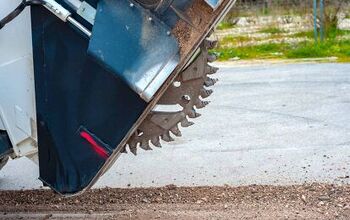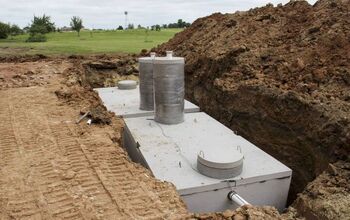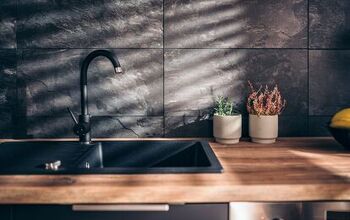8 Ways To Flood-Proof Your House

Water damaged caused by a flood can lead to thousands of dollars in repairs. While you can’t stop a flood in its tracks, you can at least do your best to minimize the damage. That’s why we compiled a list of 8 ways to flood-proof your house.
Regrade your yard and improve drainage in your landscape to help keep water from entering your home during a flood. Place sandbags and weatherstripping at the base of your doors to keep water out. Extend your downspout so it extends up to 15 feet away from your house to protect your foundation during a flood.
It’s also worth investing in an inflatable flood dam if you have a large house that sits low in elevation. Follow along as we highlight 8 easy ways to flood-proof your house.
How To Flood-Proof Your Home
While there’s no way to completely protect your house from a flood, you can at least reduce the risk of severe damage. All it takes is a few steps to minimize the devastation of a flood, such as:
1. Prioritize Boiler And Water Heater Maintenance
Boilers and water heaters are staples of countless homes, and they require routine maintenance. Failure to maintain your boiler and water heater can lead to expensive repairs. However, deferred maintenance can also cause your boiler and water heater to flood, causing extensive damage.
Ideally, you should maintain a yearly maintenance plan for your boiler and water heater. This is best done with professional help, as plumbers and HVAC technicians can identify flood risks. That way, you can catch problems before they become severe, and address them as needed.
The worst-case scenario is that you may need to replace your water heater. Water heaters last 8-12 years and boilers last 10-15 years before they must be replaced. Repair and replace your water heater and boiler as needed to prevent floods.
2. Improve Drainage
The severity of a flood has a lot to do with the drainage around your home. If water has nothing to drain into, it will likely rush toward your home and flood it. You can reduce this risk if you improve the drainage around your house.
For example, you can install rain barrels in your yard to collect rainwater. Granted, rain barrels can eventually overflow, but they still reduce the severity of flood damage. It also helps to install a French drain, which can also prevent foundation damage.
A sump pump can also help protect against flooding in your basement. Ideally, you should install several drains with backflow valves if you live in an area with frequent floods. It’s also worth installing a flood sensor to alert you to leaks before they lead to severe flooding.
3. Regrade Your Yard
According to FEMA, (Federal Emergency Management Agency) your landscape’s grade has a lot to do with how it withstands flooding. For example, sunken areas and depressions in the landscape cannot hold back water during a flood. That’s especially true if you live downhill and don’t have adequate drainage around your house.
Even without drains, you can use the surrounding landscape to flood-proof your house. Ideally, you should build up low points around your house by 1” per foot. Depending on your yard’s size, this can be an expensive project.
However, you must especially prioritize building up the landscape closest to your home. That’s because this will help prevent water from seeping into your foundation. The less steep the downward slope is, the safer your house is from a flood.
4. Use Rocks And Stones
Rocks, stones, and gravel not only add character to your yard, but they can help prevent flood damage. Many homeowners use rocks and stones to prevent landscape erosion and flooding. A nice array of gravel and stones paired with a drainage system can slow the flow of water toward your house.
Professional landscapers can strategically place rocks and gravel to keep water at bay. You can even build a retaining wall made of large stones with gravel and pavers in between. This not only keeps water away from your home and foundation but it looks great.
You can also install a rock garden around your home with pea gravel to maximize drainage. Pea gravel paired with large stones can accommodate many plants and stop water from seeping into your foundation.
5. Seal Your Doors
Sandbags may not be visually appealing, but they can protect your home during a flood. This is an easy way to seal your doors to keep water from coming in beneath them. Ideally, you should only use sandbags that are 2/3rd full so you can easily stack them.
It also helps to set up flood barriers at the foot of each of your doors. Some people even make flood barriers with plywood and seal them with Gorilla Glue and duct tape. Plastic and metal, such as aluminum, are also effective flood barriers for doors.
The pressure of the floodwater will further improve the seal, even if that sounds counterintuitive. It’s best to seal your doors long before heavy rain starts, or it may be too late.
6. Fortify Your Windows
Some people understandably don’t have time to replace their windows before a flood. In that case, you can at least seal the cracks and gaps in your windows to keep rain out. All it takes is some caulk to seal the gaps that would otherwise let rain in.
It’s also a great idea to install weatherstripping beneath your windows and doors before a flood. However, your best bet is to replace your windows if they aren’t durable enough to withstand a flood. Look for hurricane-grade windows that can keep water out and withstand violent winds.
It costs at least $40 per square foot to install flood-proof windows. However, the cost is worth it if you live in an area prone to flooding, especially in tropical climates.
7. Use An Inflatable Dam
Inflatable flood dams may seem like overkill, but they work wonders to protect homes that sit low in elevation. They are especially useful for homeowners with large yards susceptible to flooding from several angles. Inflatable flood dams are filled with air and water, and they can divert water from your yard and home.
Keep in mind that inflatable dams can displace water, so it will pool somewhere else. This can lead to landscape erosion if your yard doesn’t have great drainage. That’s why you should only use an inflatable flood dam if your yard has a good drainage system in place.
You can find inflatable flood dams for as little as $500. However, it costs up to $12,000 to install a large flood dam that can surround a massive property. This is hard for many to justify, but it’s a great idea if your house sits on acres of land.
8. Rethink Your Gutters
In some cases, gutters can make a flood worse if the downspout is too close to your house. This can erode the soil around your house, which will help water get into your foundation. It can also cause water to pool near your doors and windows, causing interior damage.
You can avoid this problem if you extend your downspout to minimize flooding around your house. Ideally, your downspout should extend 10 to 15 feet away from your home. It’s also essential to regularly clean your gutters to prevent clogs.
You don’t necessarily need to replace the downspout, as you can find cheap downspout extensions. Otherwise, water will spill out from the sides of your gutters, causing water to pool and erode the soil. It’s also worth installing a gutter guard to keep debris out of your gutters.
Summing It Up
Keep up with boiler and water heater maintenance to prevent interior flooding at home. It’s essential to improve drainage around your yard using rocks, gravel, and a French drain or similar alternative. Inflatable flood dams are essential in low landscapes. It’s also important to seal your doors and windows before a flood.
Related Guides:

Nick Durante is a professional writer with a primary focus on home improvement. When he is not writing about home improvement or taking on projects around the house, he likes to read and create art. He is always looking towards the newest trends in home improvement.
More by Nick Durante











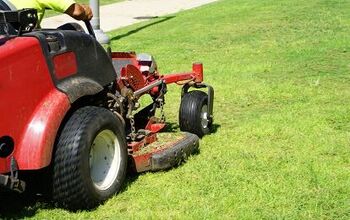
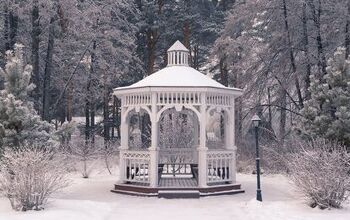

![The 10 Best Table Saws - [2022 Reviews & Buyer's Guide]](https://cdn-fastly.upgradedhome.com/media/2023/07/31/9070645/the-10-best-table-saws-2022-reviews-buyer-s-guide.jpg?size=350x220)

